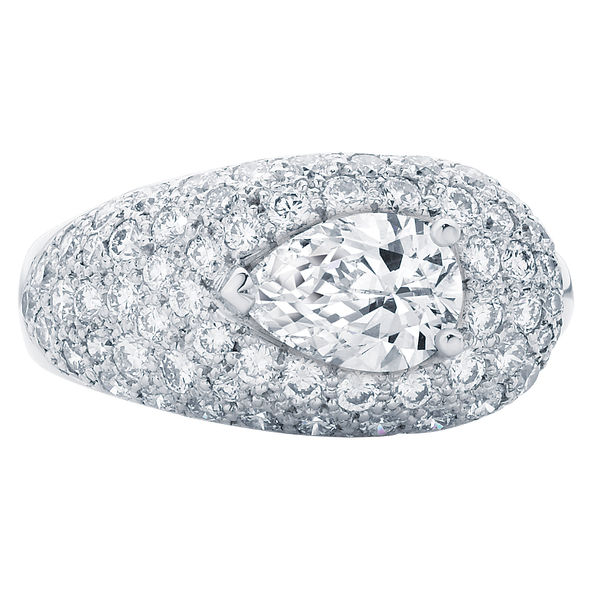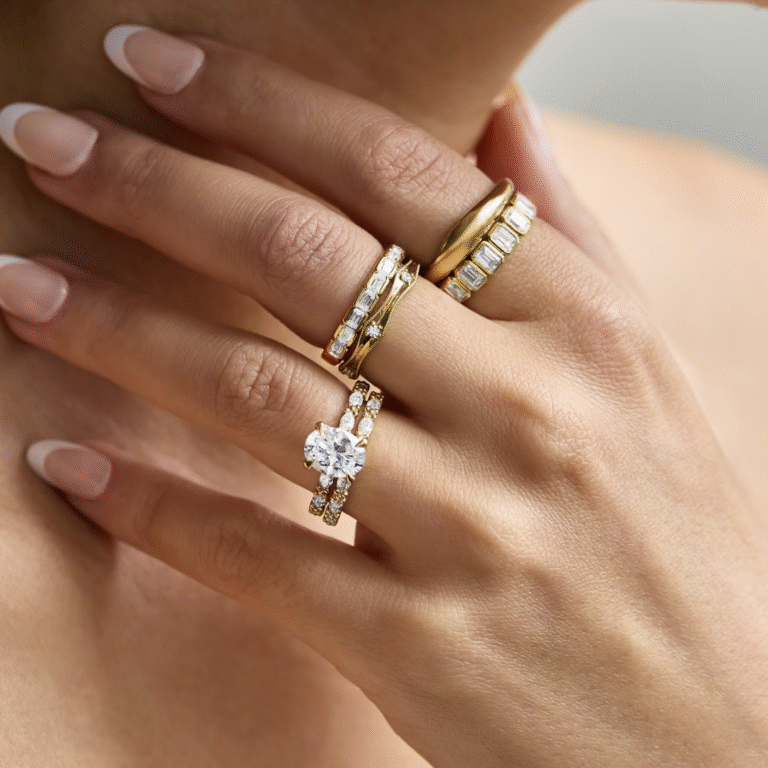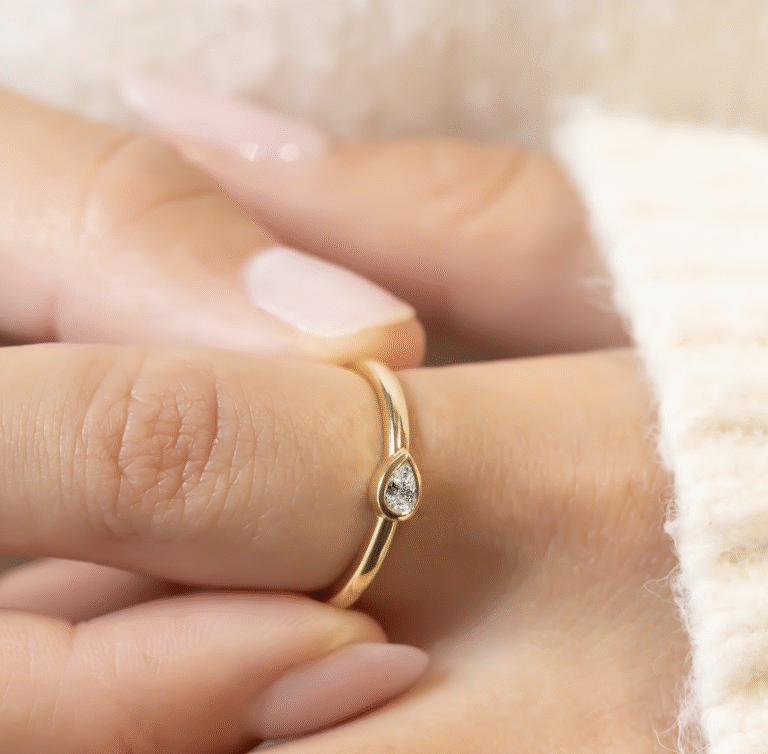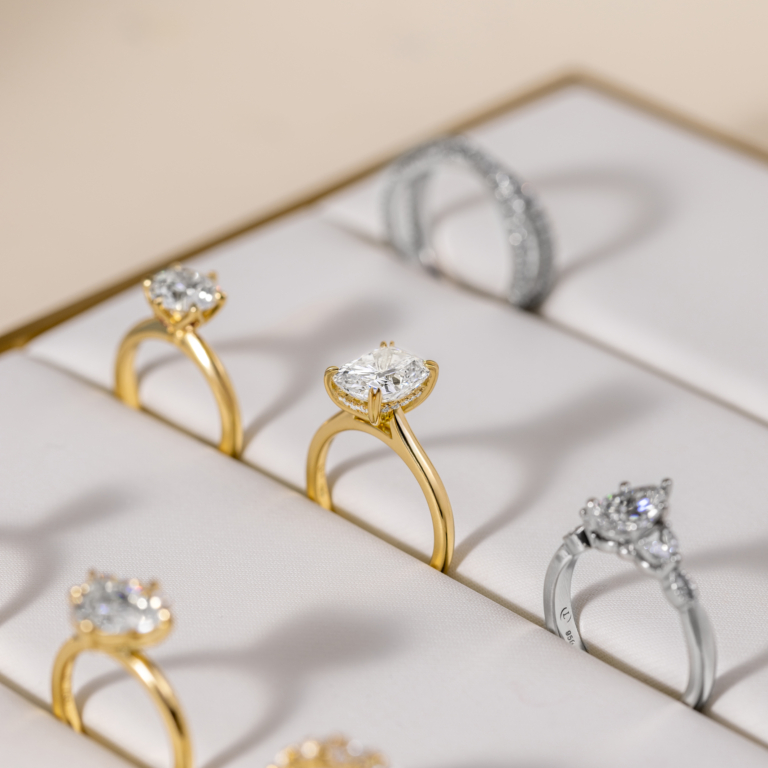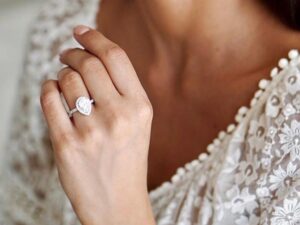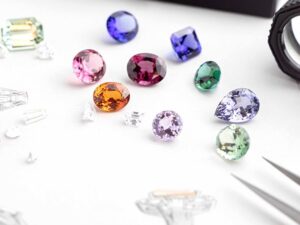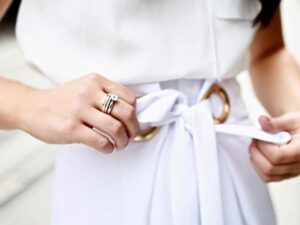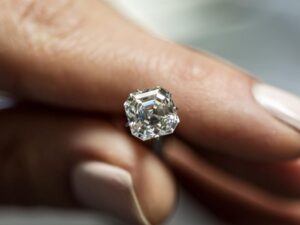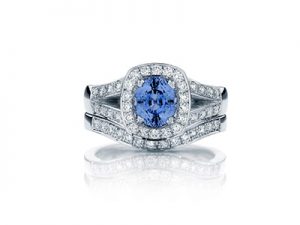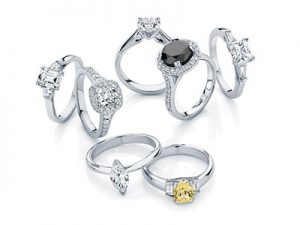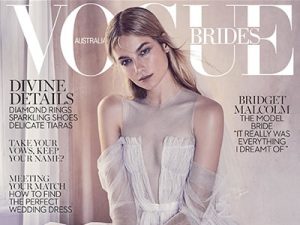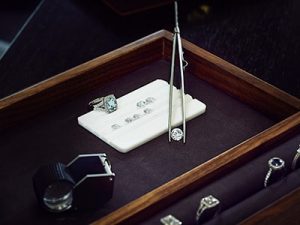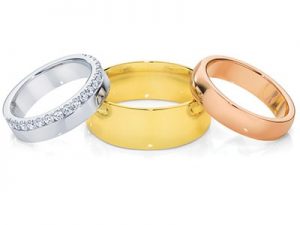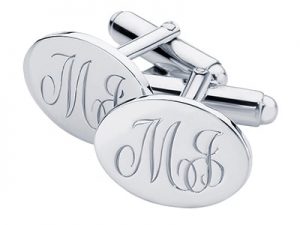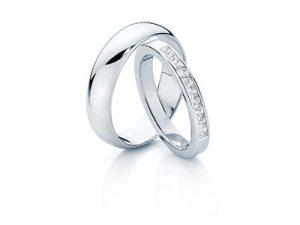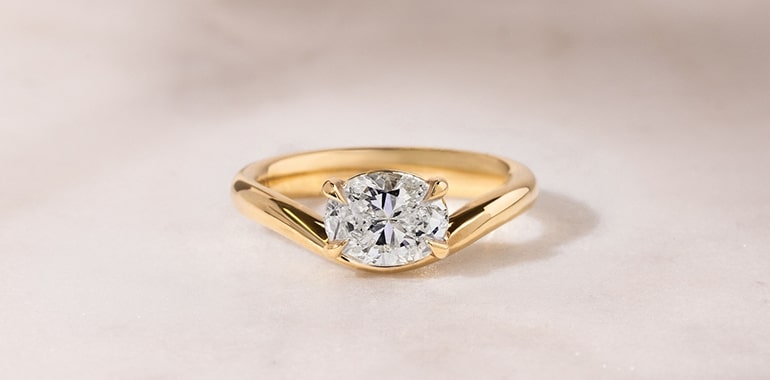Asymmetrical Engagement Rings
by Alex Sommerville
August 20, 2021 / Design Trends, Jewellery Buying Guide
When thinking of engagement rings the most common image to pop into people’s minds is the solitaire, a single diamond on a gold band with very little else. It is simple, timeless and elegant. For some, this is also precisely why they are completely uninterested in it. Wanting your engagement ring to be unique and special only to you is understandable but can be complicated from a design perspective. The challenge of individual design is that not everything is attractive to everyone, so no one design will satisfy all and nor should it. How do you make an item everyone has unique to a single individual?
Asymmetrical design is a good way to do this. It’s not for everyone, but many would say thus the basis of its appeal. You can define asymmetry as the lack of symmetry or equality between two halves of a whole. In design this principle is usually applied through a singular axis, for jewellery, it is easiest to imagine left as opposed to right. If something looks the same on both the left and right, it has symmetry. This is usually the primary goal for jewellery design as it is the easiest way to achieve balance.
Balance is the key word here, as it is possible to achieve balance with asymmetry. In fact, it is the goal above all else. A balance is achieved when the shapes used, and the space between them creates an attractive form. In short, it needs to “look right” despite not being the same on both sides. Asymmetry provides a great way to experiment with shape and colour to create an individual feel.
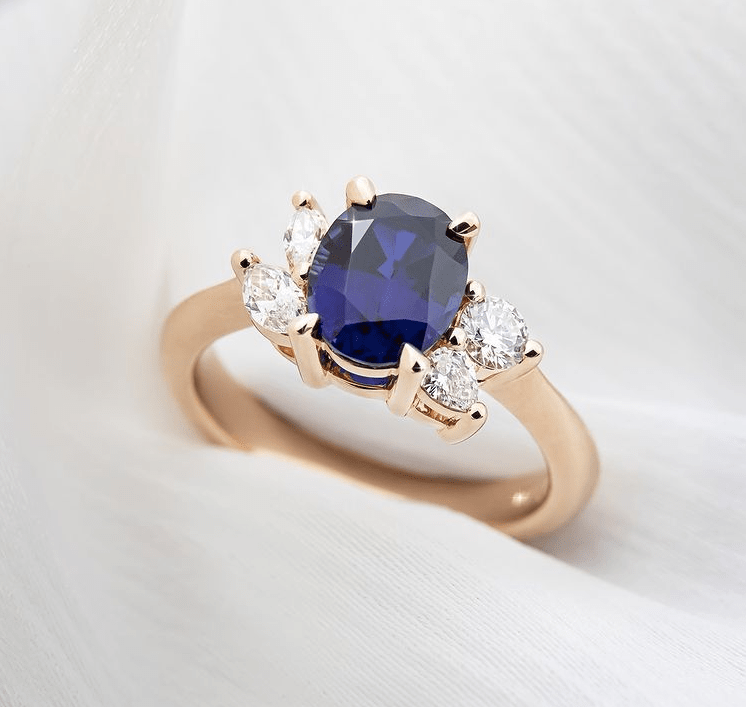
How to Design an Asymmetrical Engagement Ring
As with any engagement ring, the first place to start is the stones, in particular the stone or element you want to be the primary focus. This then needs to be offset by a collection of other stones or elements to create balance so that one side doesn’t look visually heavier than the other. More stones may not be the answer to creating the balance required. Shapes and the space they create can also be used to achieve this balance.
Asymmetry, in the case of a classic solitaire, is achievable by using free form gemstone cuts or by using an offset pear shape diamond. They are what their name suggests, stones that do not conform to a symmetrical or standardised shape. Most commonly used in coloured gemstones, these offer a great alternative to those who don’t want a cluster of stones on their hand. A similar look can be done with standard shapes being offset, tilted to one side or placed off centre.
What Elements Are Important in Asymmetrical Design?
The most important thing to remember is that the design has to flow. The eye likes things that resolve, not that end abruptly. The arrangement of elements needs to make sense and your eye will tell you almost immediately if something looks wrong. Decide on the style and the primary focus first, then build around that. It’s a good idea to play with different stone layouts and colours to see what looks right. But above all else listen to your jeweller when it comes to composition and functionality. They will have a better idea than you will if something doesn’t work.
There are different styles inside of the asymmetrical philosophy. If a single stone is too simple it can be balanced with a second. You could also create a shape with metal to fill the void and draw the eye. Perhaps a collection of small stones is a better way to go, or grouping like things together. Let’s look at them to understand them better.
Asymmetrical Coloured Stone Rings
As mentioned before free form stones are a great option in the style. There are many Australian sapphires cut in this style. They offer a great contemporary take on a much-loved staple of the jewellery trade. Coloured gemstones also offer the opportunity to play one colour off another. Red against green being one of the most effective. You can also group stones of similar tones and shades together, nothing matching but remaining cohesive.
Shape is less important in this style as the colour should be the primary thing on show. For example, a round and oval stone could be paired together. The larger of a darker colour and the smaller kept bright. You can also use a singular or group of coloured gemstones to juxtapose a diamond. The coloured stones will make the whiteness of the diamond more prominent.
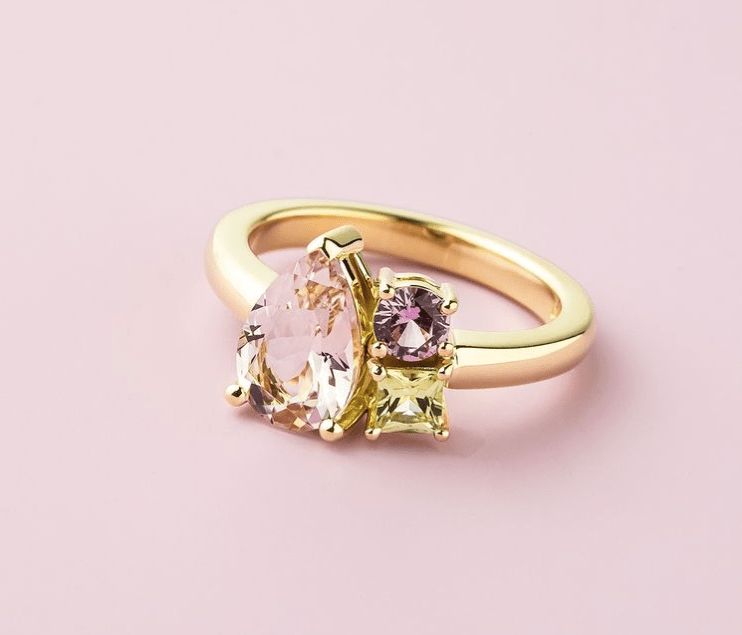
Two Stone Engagement Rings
If a grouping of stones is not to your liking keep it simple with the use of a pair. If you have a larger diamond match it with a ruby or sapphire of the same size and shape, the colour being the element that creates the asymmetry. This can also be done by varying the shape like putting a round with a square.
Balance in this style comes from a marriage of shape, size and colour. If pairing with a diamond perhaps find the coloured gemstone you like first. Then pick a diamond to complement it. Diamonds have a little more variety to choose from (particularly in terms of size) so let the coloured stone speak first.
Two stones of the same size a type can also be utilised for this type of ring, the asymmetry comes from the shapes created by the metal. Sinuous curves make a good foundation for this, as does strong geometry. Putting the detail in the metal will allow greater flexibility in the stones you can use, but will pull the focus from them. A jeweller with a good eye for composition will be able to keep the balance between the elements.
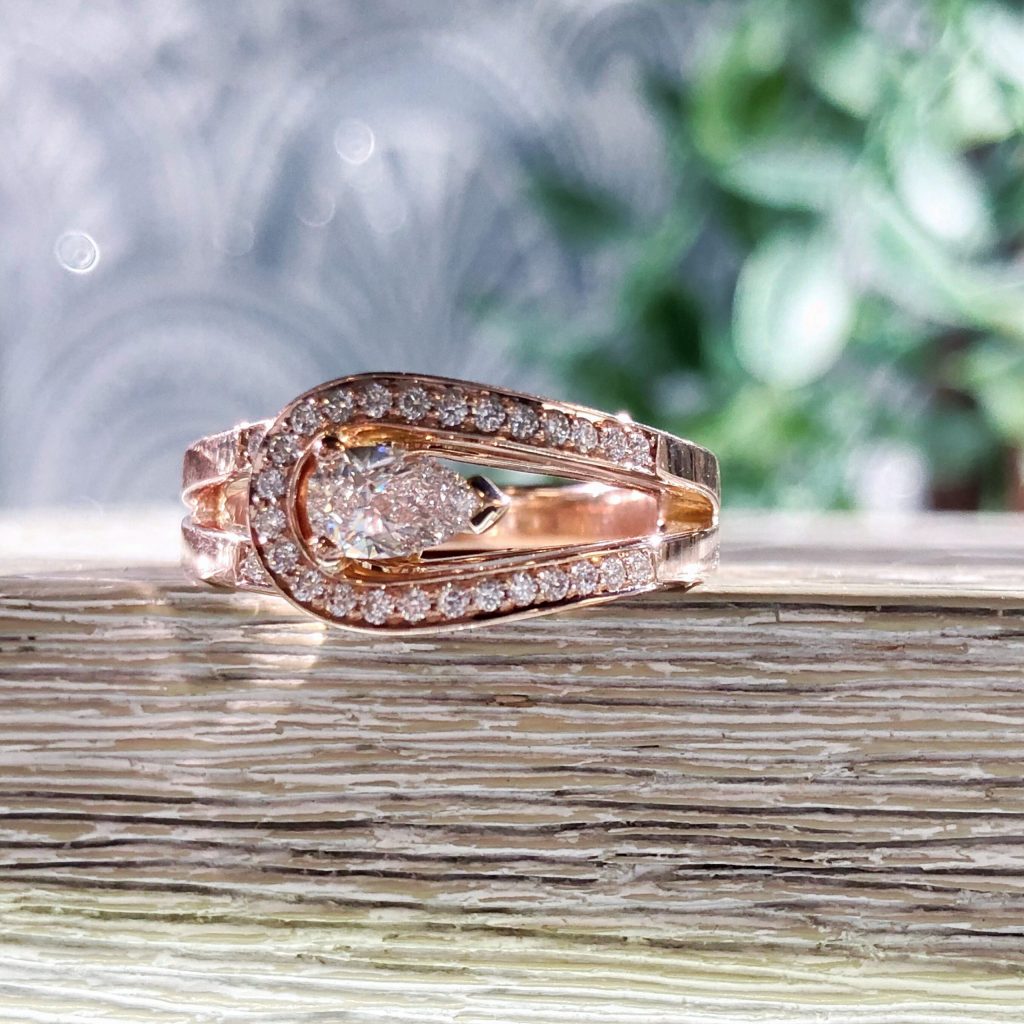
Contemporary Pear Shape Diamond Ring in Rose Gold
Asymmetrical Clusters
A cluster ring is what its name suggests, a collection of stones brought together in a clump. They are usually of varying sizes and colours and how visually heavy they are, determines the arrangement. A larger size or darker colour will make something heavy, smaller sizes or lighter colours do the opposite. If something looks too dominant placing elements of the opposite weight will give it balance.
Clusters can also be made around a central feature similar to a halo design. Randomising the shapes of the stones you place around the centre can give the asymmetrical look you are going for. Doing a layout of stones prior to design is crucial in achieving the right balance. Moving stones from one spot to another to see how it changes the balance is the best way to make the right decision. Having a variety of stones to choose from can be the best way to decide how to arrange them as the eye will be drawn to the best option.
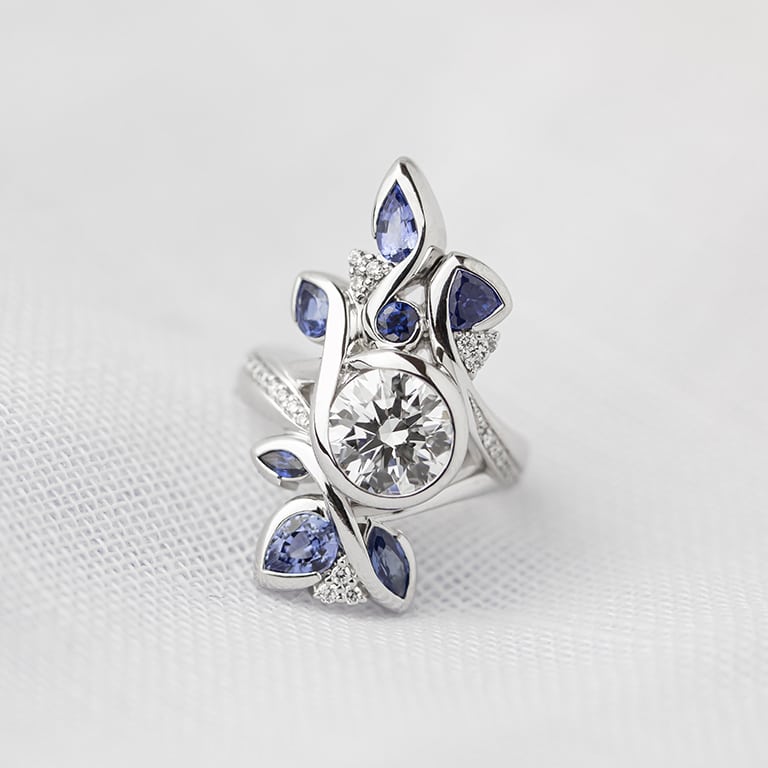
Round Brilliant Cut Diamond Ring Featuring Sapphire and Diamond Accents
Stacking Asymmetrical Rings
By placing more than one ring on the same finger you are actually creating asymmetry already. The way in which the rings interact with each other is the way the balance is achieved. Going back to the solitaire example, multiple single stone rings of different shapes can be balanced as they are of the same solitaire style. Likewise with stone set wedding rings as asymmetry can be created by using different setting styles or stone sizes. If two or more rings are going to sit beside each other the most important thing to consider is how well they will sit. If they are too different to one another there can be wear and tear issues where they touch. Plus too many rings in one space can be uncomfortable to wear. Designing them so that they interlock well is the key to a comfortable fit and sound engineering.
Trying them on (or at least something similar) is the best way to determine how much space you have to work with. They may look great in a photo but that doesn’t mean they will feel good on your hand. Everyone’s hands are different and will have different amounts of space available. Be sure the scale of what you are designing is appropriate for the hand wearing them.
Should I Choose an Asymmetrical Design?
Asymmetry is nothing to be afraid of, it just requires a detailed eye and a little bit of forethought. Sketches of the design are a great way to work out the nuts and bolts. Our computer rendering design service is the best way to bring your dream to life, it allows you to see your creation in fine detail before you start.
Asymmetry will give your piece that individual flair you’re looking for. Our team has a multitude of tools and talents to guide you through its creation. What do you think about asymmetrical engagement rings, let us know your thoughts below!
